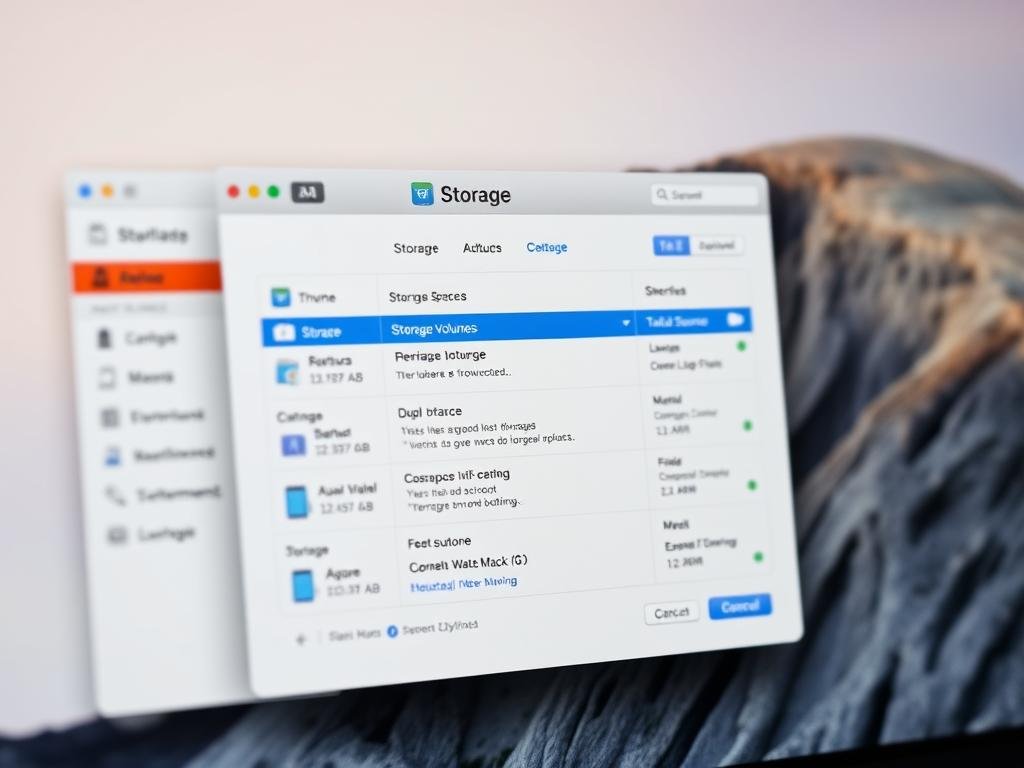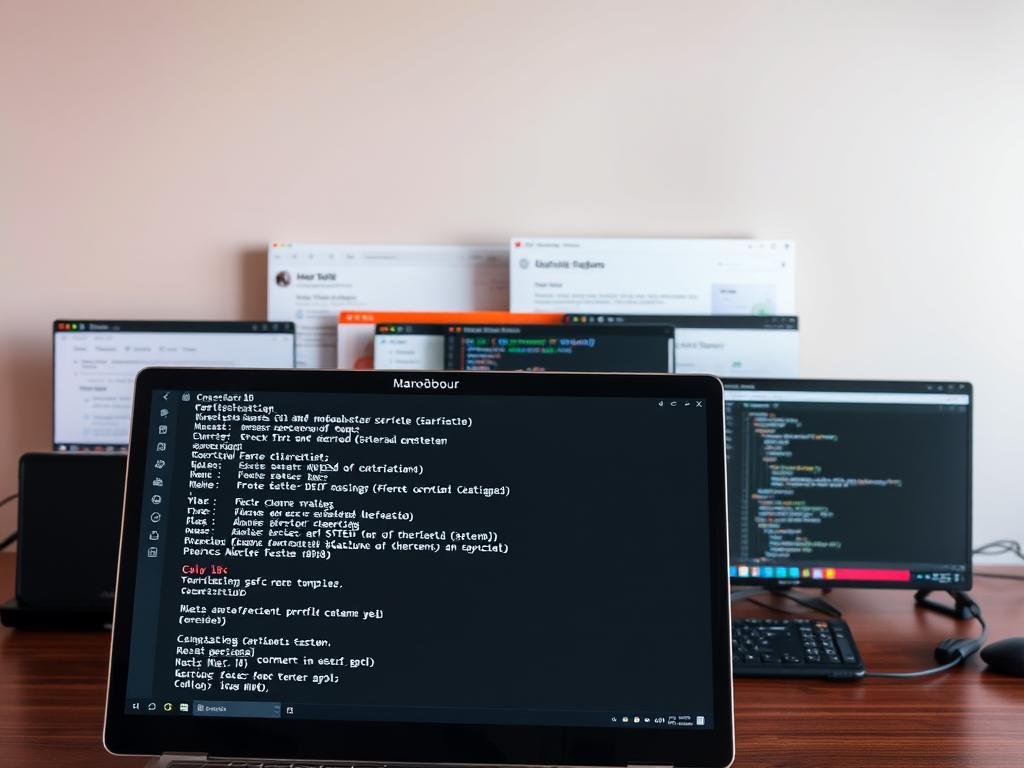Fixing Common macOS and Linux. Did you know many users struggle with macOS and Linux issues? These problems can include system setup, network, and software issues. They can really slow you down and make using your computer frustrating.
Knowing how to fix these problems is key. This guide will show you how to tackle common errors effectively. By learning these skills, you’ll be ready to face any macOS and Linux challenges that come your way.
Key Takeaways
- Understand the common issues faced by macOS and Linux users.
- Learn a systematic approach to troubleshooting.
- Discover macOS troubleshooting tips to resolve system errors.
- Explore methods to address Linux system errors.
- Improve your overall user experience by resolving these issues.
Understanding Common Errors on macOS and Linux
Fixing common errors on macOS and Linux starts with knowing their differences. Each has its own strengths and weaknesses. These differences affect how errors show up and how to fix them.
Key Differences Between macOS and Linux
macOS, made by Apple, is easy to use and works well with Apple devices. Linux, an open-source system, offers flexibility and customization. Knowing these differences helps in troubleshooting. macOS is easier to fix because it’s a closed system. Linux, with its many distributions, can have more issues.
When fixing problems, think about your system’s architecture. For example, Linux users might need to edit files directly. This is not common on macOS. For more Linux troubleshooting tips, check out Linux tech support.
Types of Errors You Might Encounter
Common errors include app crashes, network issues, and boot problems. Application crashes can be due to bugs or compatibility issues. Network connectivity problems might come from setup errors or hardware issues. Boot problems are tough and may need advanced fixes.
Knowing these issues helps you prepare and prevent some errors. Regular updates can prevent many problems. For macOS users, keeping up with updates is key for security and stability. Linux users get help from a community and lots of documentation.
How to Fix Common macOS Errors
If you’re having trouble with macOS, you’re not alone. There are ways to fix these problems. Troubleshooting techniques can help solve issues that disrupt your work.
Resolving Application Crashes
Application crashes can be annoying, but they’re common and easy to fix. Try restarting the app first. If it keeps crashing, check for updates or reinstall it.
For more serious problems, visit the XDA Developers forum. There, you can find community advice and guides.

Repairing macOS Permissions
Fixing disk permissions can solve many issues, like app crashes and system problems. Use Disk Utility, which comes with macOS. Open it, pick your startup disk, and click “First Aid” to repair permissions and fix errors.
Updating macOS for Stability
Keeping macOS updated is key for stability and security. Go to System Preferences, then “Software Update.” If there’s an update, download and install it. Regular updates prevent many errors and keep your system running well.
By using these macOS troubleshooting techniques, you can fix many common issues. For more complex problems, look into Linux software solutions or community forums for help.
Addressing Linux Boot Issues
Linux systems can face boot problems from many sources. This includes bootloader settings and disk errors. When your Linux system won’t boot, it’s key to troubleshoot carefully. This helps find and fix the main issue.
One big reason for Linux boot troubles is bootloader issues. The bootloader loads the operating system into memory. If it’s wrong or damaged, the system won’t start.
Troubleshooting Bootloader Problems
To fix bootloader issues, start by looking at the bootloader’s config files. For GRUB, a common bootloader, these files are at /etc/default/grub or /boot/grub/grub.cfg. Make sure the entries are right and point to the correct kernel and initrd images.
Here’s a simple guide for bootloader troubleshooting:
- Look over the bootloader config files for mistakes.
- Make sure the bootloader is set up right on the boot device.
- Check that the kernel and initrd images are correctly linked.
If you’re using GRUB, try running sudo update-grub in the terminal. This command updates GRUB and can fix many boot problems.
Checking Disk Integrity
Disk errors are another big reason for Linux boot issues. To check disk health, use the fsck command. It checks and fixes file system problems.
To run fsck, boot into a live Linux or use recovery mode if you can. In the live environment, run fsck on the disk or partition that’s having trouble. For example, to check /dev/sda1, run:
sudo fsck /dev/sda1Follow the instructions to fix any errors fsck finds.
Here’s a table comparing common disk checking tools:
| Tool | Purpose | Usage |
|---|---|---|
| fsck | Checks and repairs file system inconsistencies | sudo fsck /dev/sdX |
| badblocks | Checks for bad blocks on a disk | sudo badblocks -v /dev/sdX |
| smartctl | Monitors and controls SMART parameters | sudo smartctl –health /dev/sdX |
By fixing bootloader problems and checking disk health, you can often solve Linux boot issues. For more help, check out Linux tech support communities or forums.
Fixing Network Connectivity Problems on macOS
Fixing network issues on macOS needs a clear plan. Start by checking Wi-Fi problems, a common cause.
Diagnosing Wi-Fi Issues
To find Wi-Fi problems on your macOS, follow these steps:
- Check your Wi-Fi signal strength to ensure it’s stable.
- Restart your router to solve any temporary issues.
- Use the built-in Wireless Diagnostics tool to find and fix Wi-Fi problems.
Apple Support says, “Wireless Diagnostics can find the source of Wi-Fi issues and suggest fixes.”
“Wireless Diagnostics is a powerful tool that can help you troubleshoot Wi-Fi connectivity issues on your macOS device.”
Updating Network Settings
Updating your network settings can solve connectivity problems. Here’s how:
- Go to System Preferences and select Network.
- Choose your network connection and click on ‘Advanced’.
- Update your DNS settings if needed, and renew your DHCP lease.
Here’s a look at common network settings and their uses:
| Setting | Description | Use Case |
|---|---|---|
| DHCP | Automatically assigns IP addresses | Home networks |
| Static IP | Manually assigns IP addresses | Business networks needing fixed IP addresses |
| DNS | Translates domain names to IP addresses | Resolving website addresses |

By following these steps and knowing your network settings, you can solve network problems on your macOS device.
Fixing Network Connectivity Problems on Linux
Fixing network problems on Linux needs a clear plan. Users might face issues because of wrong network settings or DNS problems. This guide will help you fix these problems step by step.
Configuring Network Interfaces
Setting up network interfaces right is key for a stable connection. You can use the ip command or edit files directly to do this.
- Use the ip addr command to see your current settings.
- Edit files in /etc/network/interfaces (Debian) or /etc/sysconfig/network-scripts/ (Red Hat) to set IP addresses or use DHCP.
- Restart the network service or reboot to make the changes work.

Resolving DNS Issues
DNS problems can really mess up your connection. Here’s how to fix them:
- Check /etc/resolv.conf to make sure it has the right DNS server addresses.
- Try using dig or nslookup to test DNS.
- If your DNS isn’t working, try a public service like Google DNS or Cloudflare DNS.
By following these steps, you can fix network problems on Linux. This ensures a stable and reliable connection. For harder issues, get Linux tech support for help.
General System Performance Fixes
Keeping your system running smoothly is key for a great user experience on both macOS and Linux. Regular upkeep can make your system faster and more responsive.
Managing Storage Space on macOS
It’s important to keep an eye on your storage space on macOS. A full storage can slow down your system. Here’s how to manage your storage well:
- Check your storage: Go to About This Mac > Storage to see how your space is being used.
- Optimize storage: Use the Optimize Storage feature to remove unnecessary files and keep your Mac running smoothly.
- Delete unnecessary files: Manually go through your files and delete anything you no longer need.
By following these steps, you can free up valuable space on your macOS device, improving overall system performance.

Optimizing Linux Performance
There are several ways to boost Linux performance. Adjusting your system’s settings and cleaning up files are effective methods.
“One of the simplest ways to improve Linux performance is by ensuring your system is up to date and by removing unnecessary packages.” – Linux Expert
Here are some tips for optimizing Linux performance:
| Optimization Technique | Description |
|---|---|
| Update System | Regularly update your Linux distribution to ensure you have the latest security patches and performance improvements. |
| Remove Unnecessary Packages | Use commands like sudo apt autoremove to remove packages that are no longer needed. |
| Monitor System Resources | Use tools like top or htop to monitor system resources and identify possible bottlenecks. |
For more insights on optimizing Linux performance, check out forums like Level1Techs. There, users share their tips and experiences.
Troubleshooting Peripheral Device Issues
Fixing problems with peripheral devices is key to staying productive on both macOS and Linux. Devices like printers and USB drives are vital for daily tasks. When they fail, it can really slow you down.
Fixing Printer Problems on macOS
Printer troubles on macOS can come from many places. This includes old drivers, wrong settings, or connection issues. First, make sure your printer drivers are current. You can find the latest drivers on the manufacturer’s website.
Steps to Update Printer Drivers on macOS:
- Visit the printer manufacturer’s website.
- Navigate to the support or downloads section.
- Enter your printer model details.
- Download and install the latest drivers.
If updating drivers doesn’t fix the problem, check your printer settings. Make sure the right printer is chosen in your print dialog. Also, check that it’s set up correctly in System Preferences.
Managing USB Devices on Linux
Handling USB devices on Linux means knowing how Linux works with them. You’ll need to use specific commands to manage them. Linux usually recognizes USB devices automatically. But sometimes, you need to step in manually.
Common Commands for Managing USB Devices on Linux:
| Command | Description |
|---|---|
| lsusb | Lists all USB devices connected to the system. |
| usb-devices | Provides detailed information about USB devices. |
| mount /dev/sdX1 /mnt | Mounts a USB storage device (replace ‘X’ with the appropriate letter). |
For tougher problems or if you want to dive into USB projects on Linux, check out Raspberry Pi projects. They offer great tips and ideas.
By using these troubleshooting tips, you can fix common device problems on both macOS and Linux. This ensures your devices work well and efficiently.
Keeping Your Systems Up to Date
Both macOS and Linux need regular updates. These updates fix bugs, patch security holes, and boost system stability. Keeping your system updated can greatly improve its performance and security.
Importance of Regular Updates
Regular updates are key to keeping your system safe and sound. They often include fixes for security issues, bug fixes, and performance boosts. For macOS users, updates can solve app crashes and make the system more stable. Linux users get updates that fix bugs and improve security.
Key benefits of regular updates include:
- Enhanced security through vulnerability patches
- Improved system stability and performance
- Fixes for known bugs and issues
- New features and functionality enhancements
How to Schedule OS Updates on macOS and Linux
Scheduling updates on macOS and Linux is easy. For macOS, you can turn on automatic updates in System Preferences. On Linux, the steps differ by distribution but usually involve the package manager for automatic updates.
| Operating System | Update Method | Frequency |
|---|---|---|
| macOS | System Preferences > Software Update | Daily/Weekly |
| Linux (Ubuntu/Debian) | apt-get update & apt-get upgrade | Daily |
| Linux (Fedora/CentOS) | dnf update (Fedora/CentOS 8+) | Daily/Weekly |
By following these steps, you can keep your system current. This means you get the latest security patches and features. Regular updates are vital for a secure and stable computing environment.
Seeking Help and Resources
When you face macOS and Linux errors, you might need extra help. There are many ways to get support. This ensures you find the help you need to fix your system problems.
Official Support for macOS
Apple’s official support is a great resource for macOS users. Check out the macOS support page for troubleshooting guides and FAQs. It helps with many issues, like app crashes and network problems.
Community Support for Linux
Linux users can find help in the community forums. Sites like Linux error troubleshooting forums are full of useful information. You can also contact Linux tech support teams for specific help.
If you need more help, consider reaching out to teams like Digital Vista Online. They offer support via email at support@digitalvistaonline.com or through their contact form.
FAQ
What are the most common errors encountered on macOS and Linux systems?
Common errors include application crashes, boot issues, network problems, and issues with peripherals. It’s important to know the differences between macOS and Linux to troubleshoot these issues.
How do I resolve application crashes on macOS?
To fix application crashes on macOS, try restarting the app. Also, update macOS to the latest version. You can use Disk Utility to repair disk permissions.
What steps can I take to troubleshoot Linux boot issues?
For Linux boot issues, check the bootloader settings. Use tools like fsck for disk integrity checks. Make sure the boot order is set correctly in BIOS settings.
How do I diagnose Wi-Fi issues on macOS?
To find Wi-Fi problems on macOS, go to System Preferences > Network > Advanced. Check the Wi-Fi settings. Try restarting your router, updating network settings, or resetting the System Management Controller (SMC).
What are the steps to configure network interfaces on Linux?
To set up network interfaces on Linux, use `ifconfig` or `ip addr` to check the current setup. Edit network configuration files or use NetworkManager to make changes.
How can I optimize Linux performance?
To boost Linux performance, clean up unnecessary files to manage storage. Regularly update your system and software. Adjust settings like swappiness and disk scheduling.
How do I fix printer problems on macOS?
To solve printer issues on macOS, ensure the printer is connected right. Update the driver and check the print queue for stuck jobs. Try restarting the print system or reinstalling the printer.
Why is it important to keep my systems up to date?
Keeping systems updated is key for security, stability, and performance. Updates include bug fixes, security patches, and new features that enhance your experience.
Where can I seek help for macOS-related issues?
For macOS issues, visit Apple’s support website. You can also contact Apple Support directly or visit an Apple Store for help.
Where can I find community forums for Linux assistance?
For Linux help, check out Reddit’s r/linux. Look for Linux subforums online or visit forums specific to distributions like Ubuntu or Fedora.
